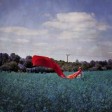A recent exhibition at the V&A Museum of Childhood displayed a range of photographs recreating some of the world’s most famous fairytales. Sonya Hurtado, a Spanish freelance photographer, uses child models as the focal points of her surreal art work, thus her simply-titled series of work, Tales, is rather in-keeping with the rest of the museum’s collection.
Tales is made up of twelve images in which Hurtado explores the imaginary world of childhood. Despite the happy, carefree demeanour society likes to believe children have, they are often victims of isolation, fear and despair. This display is not for children, but about children. It tries to reveal to the average adult the complexity of a child’s mind and their confusing emotions.
Using fairytales as the subject matter conveys a sense of innocence with an underlying darkness. These tales were not always the “happily-ever-after” stories children are told today; many originate from disturbing, violent backgrounds that would never get approval from publishers of juvenile fiction today.
However, it is not these ancient versions that Hurtado is depicting in her photographic compositions. Instead, she argues that the contemporary narratives are just as disconcerting. From the outside, they may appear fun, happy and enjoyable, but after deeper thought and consideration, worrying issues come to light.
Take, for example, Rapunzel: locking a girl in a tower is not something society would find acceptable. It would be labelled child abuse, and the villain arrested. No doubt a man using said child’s hair to climb up the wall would also be frowned upon. Similar concerns crop up in most fairytales. Hansel and Gretel: abandoning children in a forrest. Cinderella: child/slave labour. Little Red Riding Hood: is it acceptable to send a child out on a journey alone through the woods? Snow White: the queen tries to kill her, for goodness sake!
By manipulating and contrasting shadow and colour, Hurtado lets the atmosphere speak for itself, and reveal the more sinister side to fairy-tales. Her photographic works almost look like paintings due to the many components and vibrant tones. Many of the outcomes are inspired by imaginary stories as well as real life scenarios, thus making the viewer more conscious of the darker interpretations.
Tales is not an exhibition curated solely for aesthetic purposes, it creates awareness of the vulnerability of children of the present day, as well as educating its audience on the origin of fairytales. As a result, the Museum of Childhood was the perfect location for such a display. In a place where visitors are already geared to learn and discover, I expect the artwork was greatly admired and studied, and perhaps left a lasting impression on newly opened minds.











Brilliant resume
Keep believing